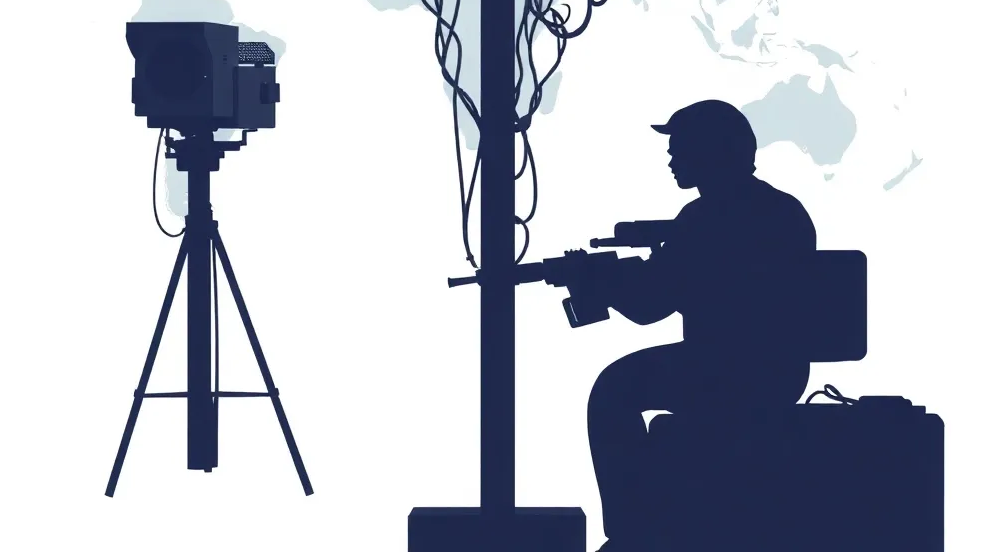The use of UAS in military and defense operations has expanded dramatically. Initially utilized for surveillance, drones are now employed for strike missions, reconnaissance, and logistical support. The ability to operate without risking human life makes them an attractive option for hazardous or remote environments. Advanced UAS platforms like the MQ-9 Reaper and smaller tactical drones like the Switchblade provide operational flexibility and reduce the need for on-the-ground personnel. This shift towards unmanned systems reflects the military’s growing reliance on technology for both strategic and tactical advantages. According to ResearchAndMarkets.com, the global market for Electronic Warfare Systems is estimated at US$18.9 Billion in 2023 and is projected to reach US$27.7 Billion by 2030, growing at a CAGR of 5.6% from 2023 to 2030.
The integration of artificial intelligence (AI) and machine learning (ML) into UAS platforms is another trend within the defense sector. AI-enabled drones are capable of autonomously identifying targets, conducting surveillance, and executing complex missions with minimal human oversight. This increased autonomy reduces the cognitive load on operators and enables faster decision-making in critical situations. Additionally, swarm drone technology, where multiple UAS operate in coordinated groups, is being developed for enhanced battlefield capabilities.
Although commercial applications have surged, the military remains one of the largest users of UAS. Drones have become an essential part of modern warfare, being used for intelligence, surveillance, reconnaissance (ISR), and targeted strikes. Small tactical drones provide ground forces with situational awareness, while larger, high-endurance drones like the MQ-9 Reaper are used for long-range missions, including precision airstrikes.
One emerging trend in military use is the development of counter-UAS technologies. As drones become more prevalent, the threat of hostile or rogue drones increases. Countries are investing in systems designed to detect, disable, or destroy enemy drones, utilizing technologies such as radio frequency jamming, lasers, and even trained birds of prey. Cybersecurity also plays a critical role as adversaries attempt to hack or intercept drone communications.

Anti-drone technologies, also known as counter-UAS (C-UAS) systems, have become essential as the proliferation of unmanned aerial systems (UAS) has increased, leading to concerns about security, privacy, and safety. The main technologies for anti-drone protection can be broadly categorized into detection and neutralization methods. Here’s an overview of the most prominent technologies in each category:
- Detection Technologies
The first step in countering drones is detecting their presence. Various technologies are used to identify, track, and classify drones:
a. Radio Frequency (RF) Detection
RF detection systems monitor the airwaves for the signals used to control drones. By scanning for the frequencies typically used for drone communication, these systems can detect and track drones in real time. They are effective against drones using traditional remote control systems and can locate both the drone and the pilot if the communication link is two-way.
Strengths: Works over long distances, effective in identifying drone types.
Weaknesses: Less effective against autonomous drones or those using encrypted signals.
b. Radar Systems
Radar is a well-established technology for detecting airborne objects. In anti-drone applications, radar systems are adapted to detect smaller, low-flying drones. Advanced radar systems can differentiate drones from birds or other flying objects by analyzing their size, speed, and movement patterns.
Strengths: Can cover large areas and works in all weather conditions.
Weaknesses: May have difficulty distinguishing between small drones and birds, leading to false positives.
c. Electro-Optical (EO) and Infrared (IR) Cameras
EO and IR cameras provide visual identification of drones. Infrared cameras detect the heat signature of a drone’s motors, while electro-optical systems capture high-resolution images. These systems are often used in conjunction with radar or RF detection to provide confirmation of the drone’s presence.
Strengths: Provides visual confirmation and is useful for identifying drone types.
Weaknesses: Limited range, affected by weather conditions like fog or darkness for EO systems, while IR systems are limited by thermal variations.
d. Acoustic Sensors
Acoustic sensors detect the unique sound patterns made by drone motors and propellers. These systems are useful in environments where other forms of detection may be obstructed, such as urban areas with buildings or dense forests.
Strengths: Can detect drones that are flying close to the ground or out of line-of-sight of traditional radar.
Weaknesses: Limited range and potential interference from ambient noise.
e. Lidar
Light Detection and Ranging (Lidar) systems use lasers to create a 3D map of the surrounding area, which can be used to detect drones flying at low altitudes. Lidar is particularly useful in close-range environments and can detect small objects with great accuracy.
Strengths: High precision, effective in low visibility conditions.
Weaknesses: Limited range compared to radar, high cost. - Neutralization Technologies
Once a drone is detected, countermeasures are needed to neutralize the threat. These can be non-destructive (disrupting the drone’s operations) or destructive (physically disabling the drone).
a. Jamming and Spoofing
RF Jamming: This technology disrupts the communication between the drone and its operator by emitting powerful signals on the same frequency bands used by drones. When the control link is severed, drones may either land, return to their operator, or hover in place.
Strengths: Non-destructive, works on a variety of consumer and commercial drones.
Weaknesses: Limited effectiveness against autonomous drones, could interfere with other communication systems in the area.
GPS Jamming/Spoofing: GPS jamming blocks the satellite signals that drones rely on for navigation. GPS spoofing goes a step further by feeding the drone false location data, potentially leading it to land in a controlled area or fly off course.
Strengths: Effective against drones using GPS for navigation.
Weaknesses: Does not work on drones with inertial navigation systems, and may interfere with civilian GPS devices.
b. High-Energy Lasers
Laser-based systems, also known as directed-energy weapons, can be used to disable drones by targeting their motors or critical electronic components. High-energy lasers can be aimed at drones to either destroy them in flight or cause enough damage to force them to crash.
Strengths: Long-range, precise targeting, minimal collateral damage.
Weaknesses: High cost, requires line-of-sight, affected by atmospheric conditions like fog or dust.
c. Kinetic Systems
Kinetic countermeasures physically disable or destroy drones. There are several types of kinetic systems:
Anti-Drone Missiles: Specialized missiles designed to engage and destroy drones in flight. These are typically used in military applications.
Strengths: Long-range, highly effective against larger drones.
Weaknesses: High cost, risk of collateral damage.
Net Guns and Launchers: Some systems use projectiles or drones that fire nets to entangle and capture rogue drones. These nets can disable the drone’s propellers, causing it to fall to the ground safely.
Strengths: Non-destructive, reusable.
Weaknesses: Limited range, difficult to deploy at high altitudes or against fast-moving drones.
Interceptor Drones: These are drones designed to hunt down and disable rogue drones by either capturing them or ramming into them to destroy them mid-flight.
Strengths: Highly maneuverable, effective in complex environments.
Weaknesses: Requires skilled operators or advanced AI to engage effectively.
d. Electromagnetic Pulse (EMP) Weapons
EMP weapons generate a short burst of electromagnetic energy that can disable a drone’s electronics without causing physical damage. These systems can be used to neutralize drones by effectively cutting off their power or disrupting their control systems.
Strengths: Can neutralize multiple drones at once, minimal collateral damage.
Weaknesses: Limited range, could affect other electronic systems in the area. - Integrated C-UAS Systems
Modern anti-drone solutions often combine several of these technologies into a unified system that can detect, track, and neutralize drones in a coordinated manner. These systems use a multi-layered approach, combining radar, RF detection, and visual sensors with jamming or kinetic countermeasures to create a comprehensive defense.
Strengths: Increased effectiveness through redundancy, suitable for protecting high-value targets like airports or military bases.
Weaknesses: Expensive and complex to deploy.

Anti-drone protection technologies are rapidly evolving in response to the growing threat posed by UAS. A combination of detection systems (such as radar, RF detection, and optical sensors) and neutralization technologies (like jamming, lasers, and kinetic solutions) is being deployed to address a wide range of threats, from small consumer drones to sophisticated military-grade UAVs. The integration of multiple systems is often necessary to ensure full-spectrum protection in complex and dynamic environments.
